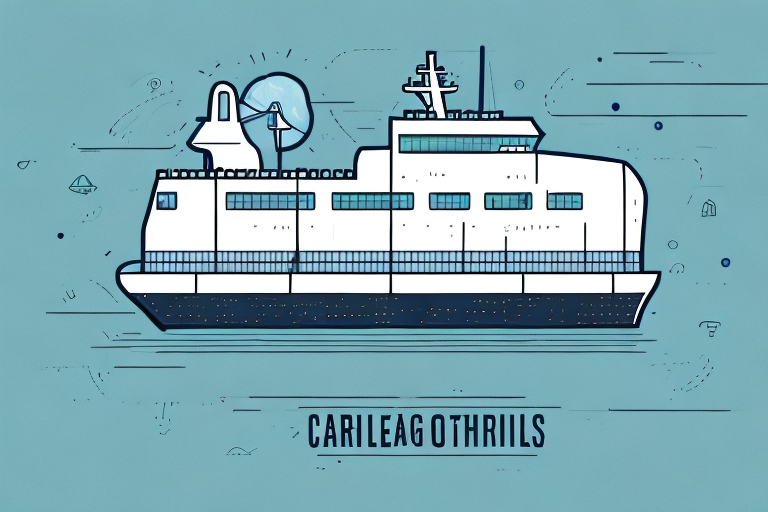Exploring the Latest Shipping Innovations for a Smoother Logistics Process
Shipping is an essential component for businesses relying on transportation to deliver goods to customers. However, traditional shipping methods are rapidly becoming outdated, failing to meet the demands of modern e-commerce. This has paved the way for new shipping innovations that promise a more efficient and seamless logistics process.
Understanding the Need for Innovations in Shipping
In today's fast-paced business environment, shipping plays a more critical role than ever. The explosion of e-commerce has expanded customer access to a vast array of products globally, heightening the demand for efficient and reliable shipping methods. Traditional shipping methods, once effective, are now insufficient to meet rising consumer expectations for speed, convenience, and personalization.
Rise of E-commerce and Consumer Expectations
With e-commerce sales projected to reach $6.3 trillion globally by 2024, businesses must innovate to keep up with increased demand and consumer expectations ([eMarketer, 2023](https://www.emarketer.com/)). Consumers now expect faster delivery times, flexible shipping options, and real-time tracking capabilities.
Emerging Shipping Innovations
Among the most significant innovations are the use of drones for delivery, advancements in real-time tracking, and increased automation within logistics operations. These technologies aim to enhance delivery speed, reduce costs, and improve overall efficiency.
The Evolution and Technological Advancements in Shipping
Shipping has undergone substantial transformation from its traditional roots to incorporate cutting-edge technologies that enhance efficiency and reliability.
From Traditional Methods to Containerization and Express Shipping
Historically, shipping involved transporting goods via sea, air, or land. Innovations such as containerization and express shipping have revolutionized the industry, allowing businesses to select shipping options tailored to their specific needs regarding speed, cost, and reliability.
Real-Time Tracking and Transparency
The introduction of GPS technology has enabled real-time tracking of shipments, providing businesses and customers with accurate information about the location and status of goods. This transparency not only enhances operational efficiency but also boosts customer satisfaction.
Automation and Robotics in Logistics
Automation technologies and robotics are increasingly being used to sort and package shipments, minimizing the need for manual labor and reducing the likelihood of errors. Companies are investing in automated systems to streamline warehouse operations and expedite the shipping process.
Impact of Emerging Technologies on Shipping and Logistics
Emerging technologies like Artificial Intelligence (AI), Big Data, and drones are significantly shaping the future of the shipping industry.
Artificial Intelligence (AI) in Shipping
AI is transforming shipping by optimizing logistics, predicting product demand, and enhancing supply chain visibility. AI-powered systems can analyze vast amounts of data to identify potential bottlenecks, forecast maintenance needs, and provide personalized customer support through chatbots.
Supply Chain Optimization
AI algorithms analyze data from multiple sources to provide real-time insights into the movement of goods, helping businesses optimize routes and improve delivery times.
Predictive Maintenance
By monitoring equipment through sensors, AI can predict potential failures, allowing businesses to perform maintenance proactively and reduce downtime.
Big Data and Predictive Analytics
Big Data allows businesses to collect and analyze extensive data on customer behavior and shipping preferences. Predictive analytics can forecast demand patterns, enabling businesses to adjust their operations to meet future needs effectively.
Demand Forecasting
Analyzing historical shipping data and customer behavior helps businesses predict future demand, allowing for better inventory management and resource allocation.
Risk Management
Big Data analytics can assess factors like weather patterns and port congestion to manage risks and prevent disruptions in shipping operations.
Drones in Logistics
Drones offer a promising solution for delivering packages quickly, especially in hard-to-reach or remote areas. Companies like Amazon and UPS are actively testing drone delivery services to enhance delivery speed and reduce transportation costs.
Opportunities
- Reduced Delivery Times: Drones can deliver packages within hours or minutes, significantly faster than traditional methods.
- Cost Efficiency: Operating drones is cheaper compared to traditional delivery vehicles that require fuel, maintenance, and drivers.
Challenges
- Legal Regulations: Navigating airspace regulations and obtaining necessary permissions remain significant hurdles.
- Technical Limitations: Battery life and payload capacity limit the range and size of packages that drones can deliver.
Sustainable Shipping Practices
With growing concerns about climate change, sustainable shipping practices are becoming essential for businesses aiming to reduce their environmental impact.
Adoption of Electric and Hybrid Vehicles
Using electric or hybrid vehicles for transportation can significantly reduce greenhouse gas emissions. These vehicles are not only eco-friendly but also offer long-term cost savings on fuel and maintenance.
Eco-Friendly Packaging
Implementing reusable packaging materials, such as crates or pallets, instead of single-use cardboard boxes, helps minimize waste and lowers packaging costs.
Reducing Carbon Footprint
Businesses are exploring various strategies to lower their carbon footprint, including optimizing shipping routes, utilizing energy-efficient warehouses, and investing in carbon offset programs.
Enhancing Customer Experience through Advanced Technologies
Providing an exceptional customer experience is vital in the competitive business landscape. Advanced shipping technologies enable businesses to offer more convenience and control over the shipping process.
Real-Time Tracking and Transparency
Offering customers real-time tracking information allows them to monitor their shipments at every stage, enhancing transparency and trust.
Personalized Shipping Options
Advanced technologies enable businesses to offer personalized shipping options, such as preferred delivery times and locations, catering to individual customer needs.
Improved Communication
AI-powered chatbots provide customers with instant support and updates regarding their orders, improving overall satisfaction and engagement.
Overcoming Challenges in Implementing Shipping Innovations
While shipping innovations offer numerous benefits, businesses must navigate several challenges to implement them successfully.
Cost Considerations
Investing in new technologies can be expensive. Businesses must evaluate the return on investment and consider long-term savings when adopting new shipping solutions.
Technical Requirements
Implementing advanced technologies requires technical expertise and infrastructure. Training employees and upgrading systems are essential steps in the adoption process.
Regulatory Compliance
Compliance with local and international regulations, especially concerning drone usage and data privacy, is crucial to avoid legal issues and ensure smooth operations.
Future Prospects and Best Practices for the Shipping Industry
The shipping industry is poised for continued evolution, driven by ongoing technological advancements and changing consumer demands.
Embracing Continuous Innovation
Businesses must stay informed about the latest shipping technologies and be willing to invest in innovations that enhance efficiency and customer satisfaction.
Flexible Shipping Strategies
Developing adaptable shipping strategies allows businesses to respond swiftly to changing market trends and customer preferences.
Learning from Successful Implementations
Analyzing case studies of businesses that have successfully adopted innovative shipping solutions provides valuable insights and best practices for others to follow.
Case Study: Amazon's Drone Delivery Initiative
Amazon has been at the forefront of drone delivery, conducting extensive tests to refine their technology and integrate it seamlessly into their logistics network. This initiative has demonstrated the potential for drones to reduce delivery times and operational costs significantly.
Preparing for Future Trends
As e-commerce continues to grow, businesses must anticipate future trends such as increased automation, greater emphasis on sustainability, and enhanced consumer expectations for fast and reliable shipping.
Conclusion: Embracing Innovations for a More Efficient Logistics Process
The shipping industry is undergoing a transformative shift driven by technological innovations. From drones and AI to sustainable practices, these advancements offer businesses tangible benefits in efficiency, cost reduction, and customer satisfaction. By investing in and embracing these technologies, businesses can stay competitive in the evolving e-commerce landscape and ensure a smooth and effective logistics process.




















